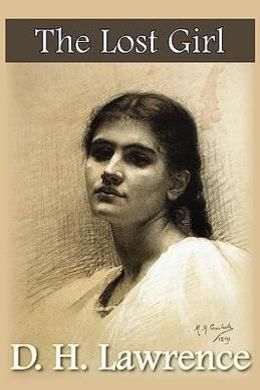
-
EPUB 382 KB
-
Kindle 547 KB
-
Support epubBooks by making a small $2.99 PayPal donation purchase.
Description
The daughter of well-to-do tradespeople in the fictional mining town of Woodhouse, Alvina Houghton struggles to find excitement in her provincial surroundings and worries that she is condemned to become an old maid. After plans to elope with her lover to Australia and train as a nurse in London lead to nothing, she joins a travelling theatre group and succumbs to the charms of the dark, passionate Italian Ciccio. Although not enjoying today the same level of fame as “Sons and Lovers” or “Lady Chatterley’s Lover”, “The Lost Girl” was greatly successful in its time, winning the prestigious 1920 James Tait Black Memorial Prize, and remains a classic Lawrence novel of sensual awakening and the yearning for freedom.
540 pages with a reading time of ~8.25 hours (135236 words), and first published in 1921. This DRM-Free edition published by epubBooks, 2011.
Community Reviews
There are currently no other reviews for this book.
Excerpt
Take a mining townlet like Woodhouse, with a population of ten thousand people, and three generations behind it. This space of three generations argues a certain well-established society. The old “County” has fled from the sight of so much disembowelled coal, to flourish on mineral rights in regions still idyllic. Remains one great and inaccessible magnate, the local coal owner: three generations old, and clambering on the bottom step of the “County,” kicking off the mass below. Rule him out. A well established society in Woodhouse, full of fine shades, ranging from the dark of coal-dust to grit of stone-mason and sawdust of timber-merchant, through the lustre of lard and butter and meat, to the perfume of the chemist and the disinfectant of the doctor, on to the serene gold-tarnish of bank-managers, cashiers for the firm, clergymen and such-like, as far as the automobile refulgence of the general-manager of all the collieries. Here the ne plus ultra. The general manager lives in the shrubberied seclusion of the so-called Manor. The genuine Hall, abandoned by the “County,” has been taken over as offices by the firm. Here we are then: a vast substratum of colliers; a thick sprinkling of tradespeople intermingled with small employers of labour and diversified by elementary schoolmasters and nonconformist clergy; a higher layer of bank-managers, rich millers and well-to-do ironmasters, episcopal clergy and the managers of collieries, then the rich and sticky cherry of the local coal-owner glistening over all. Such the complicated social system of a small industrial town in the Midlands of England, in this year of grace 1920. But let us go back a little. Such it was in the last calm year of plenty, 1913. A calm year of plenty. But one chronic and dreary malady: that of the odd women. Why, in the name of all prosperity, should every class but the lowest in such a society hang overburdened with Dead Sea fruit of odd women, unmarried, unmarriageable women, called old maids? Why is it that every tradesman, every school-master, every bank-manager, and every clergyman produces one, two, three or more old maids? Do the middle-classes, particularly the lower middle-classes, give birth to more girls than boys? Or do the lower middle-class men assiduously climb up or down, in marriage, thus leaving their true partners stranded? Or are middle-class women very squeamish in their choice of husbands? However it be, it is a tragedy. Or perhaps it is not. Perhaps these unmarried women of the middle-classes are the famous sexless-workers of our ant-industrial society, of which we hear so much. Perhaps all they lack is an occupation: in short, a job. But perhaps we might hear their own opinion, before we lay the law down. In Woodhouse, there was a terrible crop of old maids among the “nobs,” the tradespeople and the clergy. The whole town of women, colliers’ wives and all, held its breath as it saw a chance of one of these daughters of comfort and woe getting off. They flocked to the well-to-do weddings with an intoxication of relief. For let class-jealousy be what it may, a woman hates to see another woman left stalely on the shelf, without a chance. They all wanted the middle-class girls to find husbands. Every one wanted it, including the girls themselves. Hence the dismalness. Now James Houghton had only one child: his daughter Alvina. Surely Alvina Houghton– But let us retreat to the early eighties, when Alvina was a baby: or even further back, to the palmy days of James Houghton. In his palmy days, James Houghton was crême de la crême of Woodhouse society. The house of Houghton had always been well-to-do: tradespeople, we must admit; but after a few generations of affluence, tradespeople acquire a distinct cachet. Now James Houghton, at the age of twenty-eight, inherited a splendid business in Manchester goods, in Woodhouse. He was a tall, thin, elegant young man with side-whiskers, genuinely refined, somewhat in the Bulwer style. He had a taste for elegant conversation and elegant literature and elegant Christianity: a tall, thin, brittle young man, rather fluttering in his manner, full of facile ideas, and with a beautiful speaking voice: most beautiful. Withal, of course, a tradesman. He courted a small, dark woman, older than himself, daughter of a Derbyshire squire. He expected to get at least ten thousand pounds with her. In which he was disappointed, for he got only eight hundred. Being of a romantic-commercial nature, he never forgave her, but always treated her with the most elegant courtesy. To seehim peel and prepare an apple for her was an exquisite sight. But that peeled and quartered apple was her portion. This elegant Adam of commerce gave Eve her own back, nicely cored, and had no more to do with her. Meanwhile Alvina was born.
